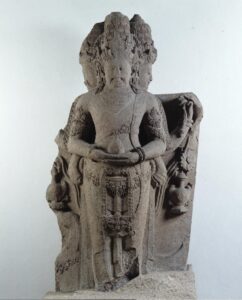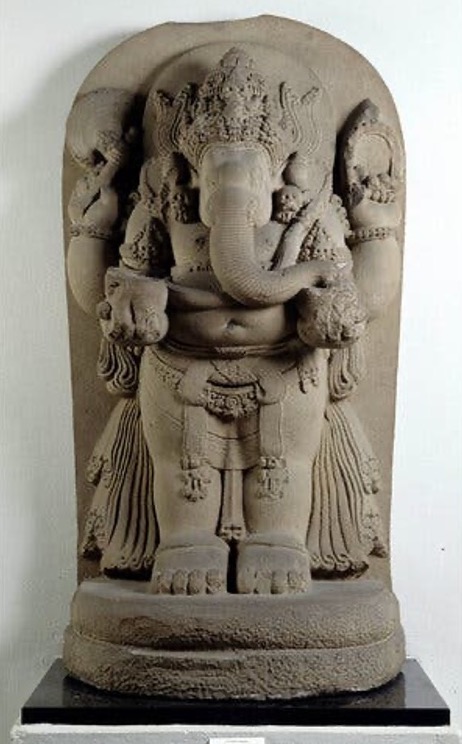INDONESIA – World News Bite

Statue of Brahma returned to Indonesia from the Netherlands, Museum of World Culture, Amsterdam.
The Netherlands announced in late September 2024 that it is returning 288 looted artifacts to Indonesia soon after its first major return of about 500 objects in July 2023 to Indonesia and Sri Lanka. The most emotionally charged returns involve items from the Puputan Badung war collection taken during the Dutch intervention in Bali in 1906 and statues from the Singhasari Temple in East Java.
The repatriation is part of an agreement signed in 2017 and involved Dutch-Indonesian cooperation in provenance studies to verify the objects’ authenticity and to identify the circumstances in which each object was taken.
Indonesian officials have emphasized that the return of these artifacts is not just about restitution but also about preserving and spreading knowledge of the country’s cultural heritage. The Indonesian government plans to exhibit the returned artifacts on October 15, 2024. The repatriation continues a policy of an earlier left-wing Dutch government despite campaign statements criticizing repatriation by the new right-wing ruling party. The Netherlands recently updated its policy on what items should be returned to include items seized by missionaries and smuggled objects.
Indonesia’s House of Representatives (DPR) member, Andreas Hugo Pareira called on the government to accelerate claims for more returns from abroad.

Kettle, Tabanan, Bali Indonesia. About 1900. Museum of World Cultures, Amsterdam.
The Netherlands conquered northern Bali in the mid-19th century, integrating the kingdoms of Jembrana and Buleleng into the Dutch East Indies. Later, they expanded control to Lombok, leading to the surrender of the Balinese kingdom of Karangasem, and in 1900, established a protectorate over Gianyar. The southern kingdoms of Tabanan and Badung which had ties to the nominal ruler of all Bali in Klungkung resisted.
The Dutch pressured these kingdoms to abandon Masatia religious practices like the burning of widows and disputed the local rulers’ claims of the right to plunder shipwrecks. In 1906, a Dutch military expedition invaded. In Denpasiman, the ruler was killed by his own priest after he refused to lead an armed resistance against the Dutch.
The climax occurred in Denpasar, where the Raja of Badung and his followers came out of the palace in cremation garb and performed a mass ritual suicide, killing each other and themselves rather than surrender. Women threw jewelry and gold coins at the troops and attacked them with spears and krisses. The Dutch panicked and opened fire.

A stone relief sculpture that was returned to Indonesia by the Manhattan District Attorney’s Office in April 2024. Courtesy Office of the Manhattan District Attorney.
The same day, the ruler and nobility in nearby Pemecutan also killed themselves with the Dutch standing by, after which the Dutch looted the palace. The mass suicides, called Puputan (Fight to the death), and the Dutch firing on the crowd resulted in the deaths of at least 1,000 Balinese. The event is remembered as the “Badung Puputan,” symbolizing Balinese resistance to foreign aggression. The ruler of Klungkung negotiated a surrender in the 1906 war, but in 1908, Dutch forces returned, prompting another Puputan resistance/suicide movement, when the last resistance ended.
The Indonesian Heritage Agency opened an exhibition of the returned artifacts October 15, featuring the “Lombok treasure” of jewelry returned by the Netherlands in 2023. The reopening of the National Museum of Indonesia comes after a year-long closure after a devastating fire burned six rooms in September of 2023.
New York officials have also returned objects to Indonesia in the past. On April 26, 2024, Manhattan District Attorney Alvin Bragg officiated over the return of three objects to Indonesia, including a stone relief sculpture dating from the Majapahit Empire (1293-1527). The sculpture was found in the storage rooms of art dealer Subash Kapoor, recently convicted by an Indian court of illicit trafficking.
 Statue of Ganesha returned by the Netherlands to Indonesia. National Museum of World Cultures, Amsterdam.
Statue of Ganesha returned by the Netherlands to Indonesia. National Museum of World Cultures, Amsterdam. 

